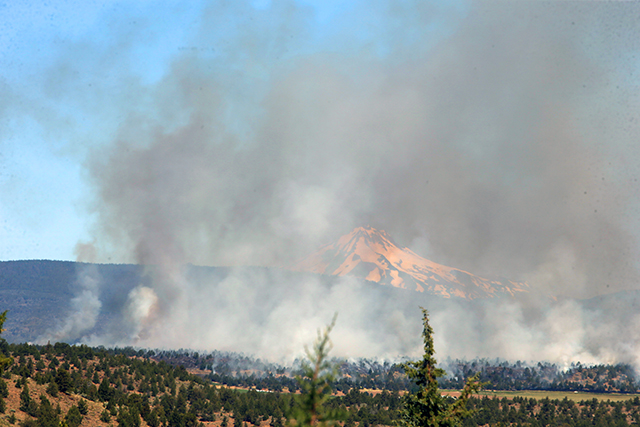Among giants
Published 5:00 am Wednesday, June 26, 2013
CLARKIA — There are spots in north-central Idaho and the state’s Panhandle where you can stroll through groves of giant trees that have stood for 500 and even 1,000 years.
Deep woods where only a few rays of light pierce the dense canopy and where the soil is dark and rich with the fertile smell of decay. Places where ferns blanket the forest floor and the air stays cool and heavy even on the hottest days.
Places like Hobo Cedar Grove Botanical Area, where visitors are awed by ancient cedars that boast double-digit diameters and measure their ages in centuries.
“I think they are really cool. They are the biggest and some of the oldest trees we’ve got in this part of the world,” said Art Zack, an ecologist with the Panhandle National Forest. “People call them the redwoods of the north.”
Other local cedar stands include the Bernard Devoto Memorial Grove along U.S. Highway 12 near Powell, the Morris Cedar Grove near Elk River, one near the eastern summit of Moscow Mountain and another on the East Fork of Moose Creek deep in the Selway-Bitterroot Wilderness.
A half day’s drive north of Lewiston, big tree lovers can visit the Hanna Flats, Roosevelt and Upper Priest Lake groves on the Panhandle National Forest near Priest Lake or the forest’s Settlers Grove of Ancient Cedars north of Wallace.
John McCarthy, of Boise, vividly recalls visiting the grove along the East Fork of Moose Creek. He admits his mind might be embellishing the facts, but adds that the huge trees seemed to go on for miles.
“Seeing big cedars is a big deal, but seeing them in a grove is amazing,” he said.
When cedars are young and in the right spot, a place with lots of moisture, moderate temperatures and protection from wind, they grow exceptionally fast. When they are old enough to be classified as ancient — those in excess of five centuries — their growth is almost imperceptible.
“By the time they are getting several hundred years old, they are growing so slowly you need a hand lens to count the rings on them,” Zack said.
Often, it is impossible to determine the precise age of the biggest cedars. But some experts claim they can be measured in millennia.
“I don’t doubt they will go over 1,000 years,” Zack said. “When a cedar gets that old, it gets rotten in the center and it’s hard to count (its rings). On the Upper Priest River, I have counted over 500 rings on a tree.”
For context, a 500-year-old tree was alive when Spanish explorer Ponce de Leon landed on the Florida Coast. A tree in the 1,000-year-old range began life around the time Norse explorer Leif Ericson is believed to have visited North America. A tree more than 3,000-years-old, as the Giant Cedar near Elk River is purported be, was alive when David flung a rock from his slingshot and killed the giant Goliath.
In all those centuries, the isolated groves have been spared from the big fires that periodically roar across the landscape. Part of that is luck. But mostly, it’s because the groves are in moist areas that can repel all but the biggest and hottest fires.
“In 1910, we lost a lot of these areas, but it will take an unusual fire to get in there,” Zack said.
Sue Hagle, a retired Forest Service botanist who lives near Harpster, said cedars have thin bark and the tree will die when exposed to intense heat. But she said the giants tend to be rife with scars from small fires and other signs of old age.
“It’s amazing how many scars they can have and how much rot they can have and still stand for a long time,” she said.
They stand for so long, they tend to out live other species common in old-growth forests. Hagle said in a typical progression, forests might start out with species like western white pine and larch that need lots of sun. Then species like grand fir, Douglas fir and cedar come in. As the amount of shade increases, white pine and larch have a hard time reproducing. Douglas fir, grand fir and cedar tolerate the shade and thrive. But over time, the fir trees succumb to other maladies like root rot.
“Cedar does get root disease, but tolerates it a really long time,” Hagle said. “That is why it tends to be kind of the last species in the succession.”
Because of the shade, there tends not to be a lot of small trees or brush growing beneath giant cedars. Plants and flowers that are especially adapted to wet habitat types will thrive in the groves and add to their otherworldly mystique.
“When the ferns are up and green, it’s just like walking through a magical spot,” Zack said.






